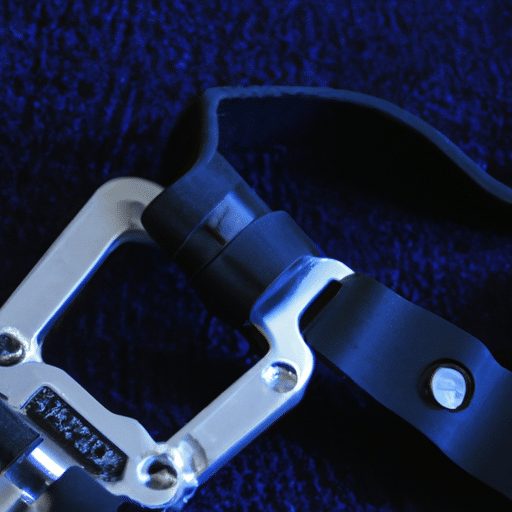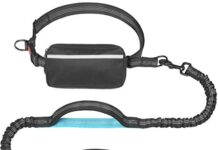If you’ve ever wondered how to make the switch from a collar to a harness for your furry friend, you’re in the right place! Transitioning your dog to a harness can provide numerous benefits, from reducing neck strain to giving you better control during walks. In this article, we’ll explore some simple and effective steps to help you introduce and train your dog to wear a harness with ease. So, let’s get started on this exciting journey of giving your pup the comfort and support they deserve!
Choosing the Right Harness
When it comes to choosing a harness for your furry friend, there are a few important factors to consider. Firstly, you need to take into account your dog’s size and breed. Different breeds have different body shapes and sizes, so it’s important to find a harness that fits your dog properly.
Another factor to consider is the material and design of the harness. Some dogs have sensitive skin, so you may want to opt for a harness made from a soft, breathable material. Additionally, the design of the harness should be comfortable and allow for a full range of motion for your dog.
Lastly, ensure that the harness fits properly. A loose or ill-fitting harness can cause discomfort or even injury to your dog. Measure your dog’s chest circumference and neck size to ensure a proper fit, and always check the harness for any signs of wear and tear.
Introducing the Harness to Your Dog
Introducing a harness to your dog can be a new and potentially daunting experience for them. To help them feel more comfortable, it’s important to let them familiarize themselves with the harness before putting it on.
Start by leaving the harness in an area where your dog can investigate it at their own pace. Allow them to sniff and interact with it, so they can become accustomed to its presence and scent. This will help to reduce any anxiety or fear they may have towards the harness.
When it’s time to put the harness on your dog, start with short sessions. Put the harness on for just a few minutes at a time, gradually increasing the duration over several sessions. This gradual approach will help your dog adjust to wearing the harness and prevent them from feeling overwhelmed.
During these initial sessions, use positive reinforcement to reward your dog for their cooperation. Offer treats, praise, and affection when your dog allows you to put the harness on and wear it without resistance. This positive association will help your dog view the harness as something positive and rewarding.
Getting Your Dog Comfortable with the Harness
To ensure your dog is comfortable wearing the harness for extended periods of time, it’s important to associate the harness with positive experiences. Use the harness during activities that your dog enjoys, such as playtime, walks, or training sessions. This will help them see the harness as a precursor to fun and enjoyable activities.
Gradually increase the duration of wearing the harness. Initially, your dog may only be comfortable wearing it for a few minutes at a time, but over time, you can gradually increase the duration to hours. Pay attention to your dog’s comfort level and never force them to wear the harness for longer than they are comfortable with.
It’s also important to regularly check your dog’s comfort level while wearing the harness. Make sure it’s not too tight or too loose, as this can cause discomfort or chafing. Adjust the harness accordingly to ensure a proper fit and monitor your dog for any signs of discomfort or irritation.
Transitioning from Collar to Harness
Transitioning from a collar to a harness can be a gradual process. To start, attach the harness alongside the collar during walks or outings. This will give your dog a sense of familiarity, as they are still wearing their usual collar.
Over time, gradually decrease the reliance on the collar and increase the use of the harness. Begin by loosening the collar slightly and tightening the harness, so the majority of the pulling force is directed towards the harness. Eventually, you can remove the collar altogether once your dog is comfortable and confident in the harness.
During this transition period, it’s important to monitor your dog’s response. Keep an eye out for any signs of discomfort or resistance. If your dog is showing signs of stress or anxiety, slow down the transition process and give them more time to adjust.
Teaching Your Dog to Walk on a Harness
Once your dog is comfortable wearing the harness, it’s time to teach them how to walk on a leash using the harness. Start by practicing indoors in a controlled environment. This will allow your dog to focus on learning without any distractions.
When walking with the harness, avoid pulling on the leash. Instead, use gentle cues and positive reinforcement to encourage your dog to walk by your side. Reward them with treats and praise for desired behavior, such as walking calmly or stopping when you stop.
Consistency is key when teaching your dog to walk on a harness. Practice regularly and gradually increase the difficulty of the walks by introducing more distractions or taking walks in new environments. With time and patience, your dog will become more comfortable and confident walking on a harness.
Addressing Common Challenges
When transitioning to a harness, there may be some common challenges you might face. One of these challenges is resistance or fear of the harness. If your dog shows signs of fear or resistance, take a step back and allow them more time to acclimate to the harness. Use positive reinforcement and patience to gradually overcome their fears.
Another challenge is escaping or slipping out of the harness. Ensure that the harness is properly fitted and adjusted to prevent any escape attempts. If your dog continues to escape from the harness, consider trying a different style or design that provides a more secure fit.
Chafing or rubbing issues can also occur with some harnesses. Regularly check your dog’s skin for any signs of irritation or redness. If chafing occurs, try using a harness made from a softer material or add padding to the areas that come into contact with your dog’s skin.
Additional Tips for a Smooth Transition
When transitioning your dog from a collar to a harness, it’s important to be patient and go at your dog’s pace. Every dog is different, and some may take longer to adjust than others. Stay positive, offer encouragement, and celebrate small victories along the way.
If you’re having trouble with the transition or if your dog is showing signs of distress, consider seeking professional guidance. A professional dog trainer or behaviorist can provide personalized advice and support to help make the transition smoother for both you and your dog.
Lastly, regularly check and adjust the harness as needed. Dogs may gain or lose weight over time, so it’s important to ensure a proper and comfortable fit. Check for any signs of wear and tear, such as frayed straps or loose buckles, and replace the harness if necessary.
Frequently Asked Questions
How long does it take for a dog to adjust to a harness?
The time it takes for a dog to adjust to a harness can vary depending on the individual dog and their previous experiences. Some dogs may adapt quickly within a few days, while others may take weeks or even months. It’s important to be patient and allow your dog the time they need to adjust at their own pace.
Can any dog wear a harness?
In general, most dogs can wear a harness. However, there are certain situations where a harness may not be suitable. Dogs with respiratory issues or neck injuries may benefit more from a harness that distributes the pulling force across their chest rather than their neck. Additionally, some small breeds or toy breeds may require a specially designed harness to ensure a proper fit.
Is it safe to leave a harness on a dog all the time?
While it’s generally safe for dogs to wear a properly fitted harness during walks and outings, it’s not recommended to leave a harness on a dog all the time. Continuous wear can lead to skin irritation, rubbing, or chafing. It’s important to give your dog regular breaks from wearing the harness to allow their skin to breathe and to prevent any potential discomfort.









































